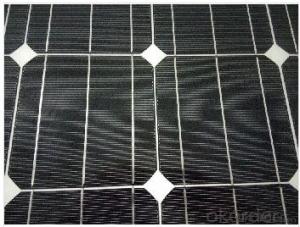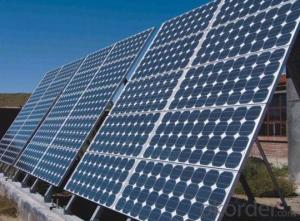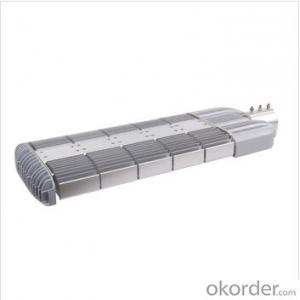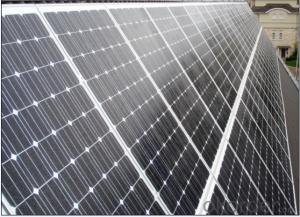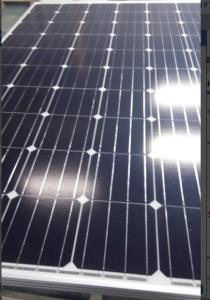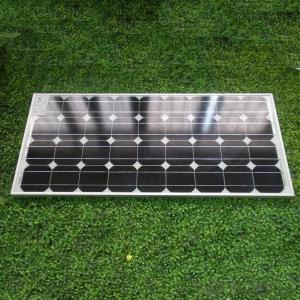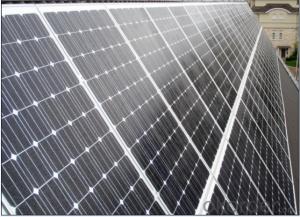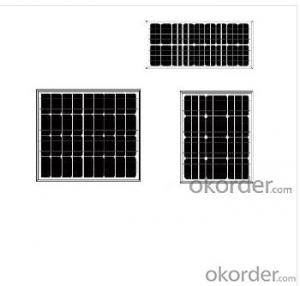Buy Wholesale CNBM Brand Mono Solar Panels
- Loading Port:
- Shanghai
- Payment Terms:
- TT or LC
- Min Order Qty:
- 1 PCS
- Supply Capability:
- 100000 PCS/month
OKorder Service Pledge
OKorder Financial Service
You Might Also Like
Description:
CNBM Solar is a world-leading and Vertical integrated manufacturer of high-performance with Silicon,
Wafer, Cells, Modules, which convert sunlight into electricity for residential, commercial, and utility-scale
power generation.
The capacity of CNBMSolar is reach to 1GW, and make sure each year our shipment capacity is more
Than 700-800MWs, at the same time, we have set up the largest solar power station with our partner
in Ukraine.
CNBM is a Quality + Service oriented company with“Excellence at Each Step” approach, composed of
the finest components from TUV and IEC-certified partners around the world, CNBM modules consistently
undergo a variety of trials at the company’s Test & Development Centre, ensuring peak performance
capabilities. The company is committed to develop and provide the world with clean and renewable energy
to ease the energy shortages as well as human kind’s impact on the environment.
Product Feature&Data:
Rated maximum power (Pmax) 250W
Open circuit voltage (vOC) 37.30
Short circuit current (Isc) 8.78
Maximum power voltage (Vmp) 30.10
Maximum power current (Imp) 8.31
Cell efficiency (%) 17.50%
Max system voltage (VDC) 1000V DC
Temperature coefficient of Vm -0.241%/K
Temperature coefficient of Im +0.033%/k
Temperature coefficient of power -0.37%/K
Maximum Series Fuse Rating 15A
Solar cell and configuratiou 60pcs(6*10)in series,156*156mm monocrystalline
Junction box IP65,1000VDC,TUV certified;6 pcs Schottky By-pass diodes
Cable type & CONNECTOR 4m㎡,TUV certificated,0.9m length;MC4
Encapsulation low iron tempered glass,3.2mm thickness,light transmission above 91%;TPT and fast cure EVA
Farame clear anodized aluminum alloy,50/45mm thickness,silver
Dimension (l*W*H) 1640*990*50mm/45mm
Weight 20KG/19KG
Heavy mechanical load salient features 540Pa (ACCORDING TO ICE61215)
Hail impact test lce ball dianeter 25mm,23m/s
Operating temperature -40℃~+85 ℃
Standard test conditions: STC:AM=1.5,1000W/m2,cells temperature 25℃
Power tolerance:±3% (can be provided 0~±3%)
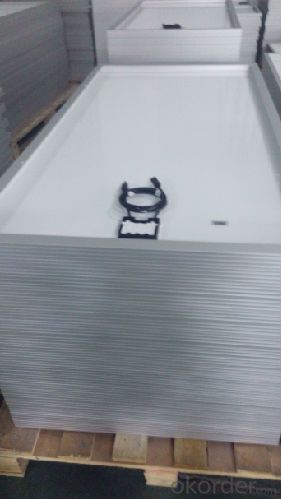
FAQ:What's products warranty?
No less than 90% within 10yrs and no less than 80% within 25yrs
- Q: Can solar panels be used in areas with high levels of rainfall?
- Yes, solar panels can be used in areas with high levels of rainfall. While rainfall may temporarily reduce the amount of sunlight reaching the panels, modern solar panels are designed to efficiently capture and convert even diffuse light. Additionally, regular rainfall can help keep the panels clean, improving their overall performance.
- Q: I need to use solar panels to charge lead acid batteries in an off-grid application. I understand that solar panels have a open circuit maximum voltage and an maximum amperage under no resistance, and that one can optimize the power output by regulating the load (resistance). If so, is just connecting 2 -volt solar panels to a lead-acid battery inefficient? Are there devices that will maximize 2 volt output power (by varying the resistance)? Am I on the right track here? Thanks for any help.
- Hi, okorder / having good batteries like this one make save you the hassel to buy controllers. You can control your own charge buy different tips
- Q: I'm thinking of these solar panels that people have on their rooftops in domestic properties. I suppose I mean after how long do you break even with respect to just carrying on without them and getting you electricity from the utilities companies? Or answer in any way you think is pertinent. The more info the better.
- Hi Warne, Payback period of solar panels depends on three main factors: ) Amount of solar radiation available: the more solar resource available at a site, the shorter the payback period will be. The insolation level is a function of latitude, cloudiness, elevation and some other factors. 2) Availability of grants, incentives and tax credits. Reducing the initial cash outlay is a great way to speed up profitability. For example, in the US, the 30% federal tax credit greatly reduces the payback period as it puts some of the cash back in your pocket in a short amount of time. Minimizing the initial cost has a big impact, since money in your pocket today is always worth more than money down the road. 3) Net metering or feed-in-tariff. If you are able to sell back your excess power, or all of the solar electricity to the grid, then you can also improve the payback period. Feed-in-tariffs are not very common in North America, but net metering is an option. Investing in energy efficiency measures (e.g., LED lights) at the same time as solar may help generate more excess power and help with the bottom line. There are some online calculators which may help you put all these together for a specific site. I'm including a link below.
- Q: What do I need to use this as a battery charger
- I hope this will help you choose your charge controller / battery charger more effectively. Good luck!
- Q: Can solar panels be used in areas with frequent thunderstorms?
- Yes, solar panels can be used in areas with frequent thunderstorms. While thunderstorms may temporarily reduce the efficiency of solar panels due to cloud cover and reduced sunlight, they do not pose any significant risk to the panels themselves. Properly installed solar panels are designed to withstand various weather conditions, including thunderstorms. Additionally, the energy produced by solar panels during sunny periods can still offset the electricity consumed during stormy periods, making them a viable option for areas prone to thunderstorms.
- Q: Can solar panels be installed on a government building?
- Yes, solar panels can be installed on government buildings. Many government buildings have started adopting solar energy to reduce their reliance on traditional energy sources and to promote sustainability. The installation of solar panels on government buildings not only helps to decrease energy costs but also contributes to the overall effort of transitioning to cleaner and renewable energy sources.
- Q: Can solar panels be installed on airports?
- Yes, solar panels can be installed on airports. In fact, many airports around the world have already embraced solar energy to meet their power needs and reduce their carbon footprint. These panels are typically installed on rooftops, parking structures, or vacant land within the airport premises. The use of solar panels in airports not only helps generate clean and renewable energy but also contributes to cost savings and long-term sustainability.
- Q: Can solar panels be used in areas with high levels of lightning activity?
- Yes, solar panels can be used in areas with high levels of lightning activity. However, they may be more susceptible to damage from lightning strikes compared to other structures. To mitigate this risk, proper grounding and surge protection measures should be implemented to safeguard the solar panels and associated equipment.
- Q: What would it take to make a heater for a small solar panel. I am looking into making a heater for a livestock tank to keep ice melted. I know that heaters take alot of energy to run, but my theory is that if heated mirrors on a car can melt ice with low voltage and im sure not extreme heat (40-60 degrees) then making a heater with just high enough temperature to keep from icing over and melting ice is possible. Where do I start? I would like to use an inexpensive solar panel that will generate enough heat to keep ice from forming and melt it at the beginning of the day. How can you make such a heater and apply Ohms law so that it will function correctly, what Wattage will the pannel need to produce to generate enough heat for the heater. The device will only have to be large enough to melt a spot large enough for an animal to drink.
- Homemade okorder
- Q: Do I need some type of regulator when the batteries are fully charged.?? The Arco Panels voltage is approx 7VDC at 2.5 amps, Should I limited the voltage to 4VDC???. I would like to connect both panels to up to five batteries at one time...???
- You can buy Solar Charger Regulators. I don't. These chargers limit the charging current to the batteries, so you do not get a full efficiency of the solar panel. They disconnect the batteries from the user side (the bulbs you use) if the battery voltage goes below a certain level (i.e. below 8V for a 2V battery), so you cannot use all the power available in the batteries, even in emergency. They introduce, at least, a 0.7V loss (diode forward voltage) between the panel and the battery. If you have SEVERAL panels and a lot of batteries, use a controller as above. If you only have one panel, insert a 5A trip fuse in line (in your case: twice the current of the panel), and a 0-20A diode in series between the panel and the batteries (Kathode side of the + of the battery, Anode side of the + of the panel). Install a voltmeter across the battery. The fuse will prevent any short or over-charge current. The diode will prevent the battery to discharge into the panel at night if it is not already protected. The voltmeter will allow you to watch the status. Your thought of limiting the voltage is useless: should the battery be low, the panel will drop its voltage, limited by the max current. Should the battery be fully charged and the solar panel at full efficiency, it will just try to charge the battery more. A bit of bubbles may result, hence the voltmeter to watch over it. If you want to limit the voltage to 4V, put a 4V Zener (4Vx2.5W!) in series with a resistor of, say, 7V-4V/2.5A or ~ Ohm, 5W, in parallel with the panel.
Send your message to us
Buy Wholesale CNBM Brand Mono Solar Panels
- Loading Port:
- Shanghai
- Payment Terms:
- TT or LC
- Min Order Qty:
- 1 PCS
- Supply Capability:
- 100000 PCS/month
OKorder Service Pledge
OKorder Financial Service
Similar products
Hot products
Hot Searches
Related keywords
